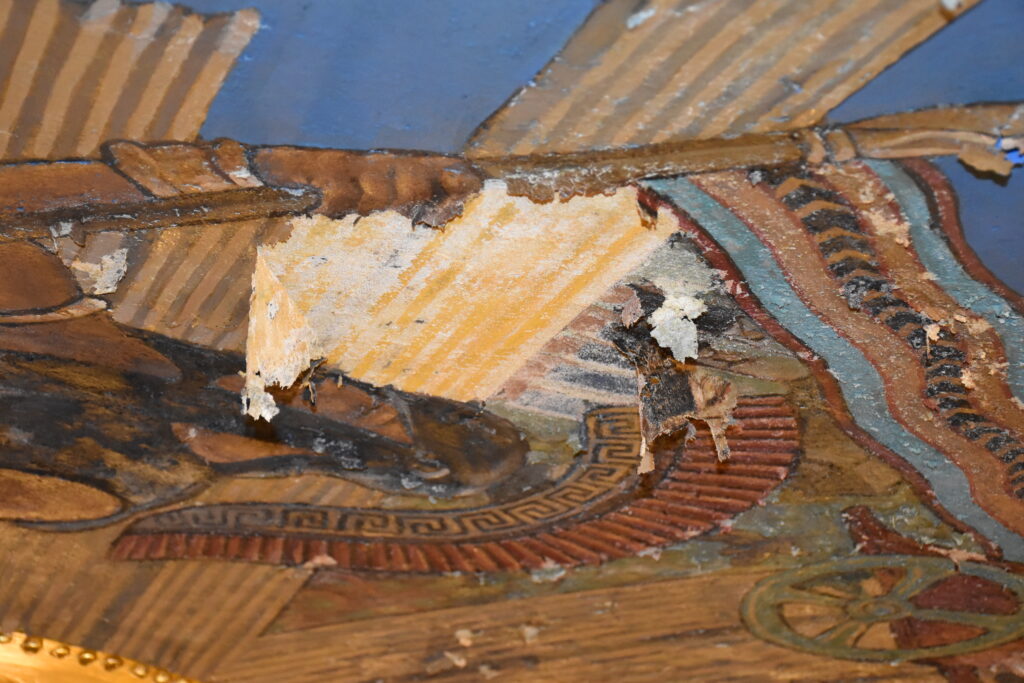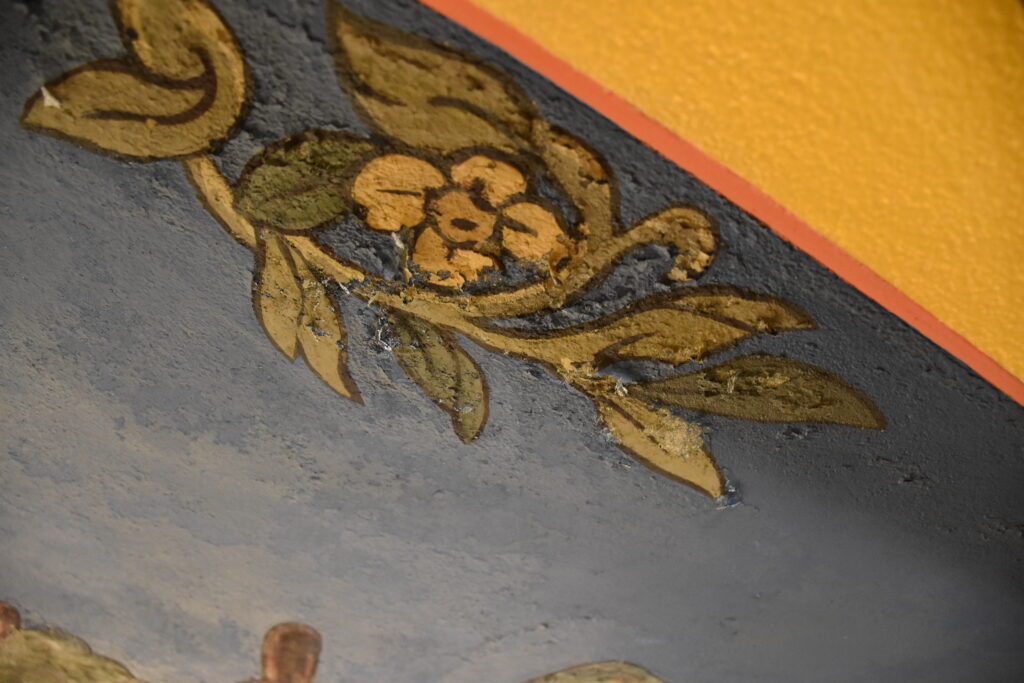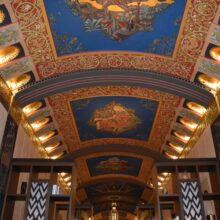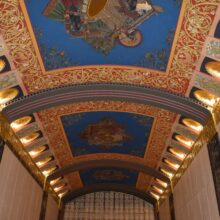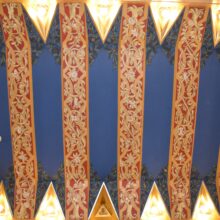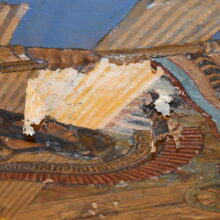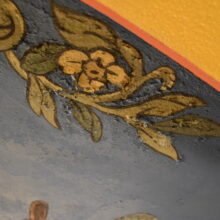140 West Street Lobby
140 West Street is an office and residential tower located in Lower Manhattan in New York, New York. After substantial growth following World War I, the New York Telephone Company purchased the plot at 140 West Street for their new headquarters. Construction of the New York Telephone Company Building–later known as the Barclay-Vesey Building and the Verizon Building–occurred between 1923 and 1927. The building was designed by architect Ralph Walker of Voorhees, Gmelin and Walker in the Art Deco style; it is recognized as the first American Art Deco-style skyscraper. The building’s first floor lobby features intricate Art Deco ornamentation; the ceiling is decorated with twelve hand-painted murals by artist Hugh RB Newman depicting the history of communication, such as methods of early 20th-century modern communication, including the telephone, telegraph, and radio.
140 West Street was primarily occupied by the New York Telephone Company until 1970, when the company moved most of its offices to a new development in Midtown. The building was subsequently occupied by NYNEX in the 1980s, Bell Atlantic in the late 1990s following the merger with NYNEX, and Verizon in 2000 following the merger with Bell Atlantic.
The building is located directly north of the former World Trade Center and was a witness to and a survivor of the attacks on 9/11/2001. The structure was added to the New York City Landmarks Register in 1991 and the National Register of Historic Places in 2009.
EverGreene was retained by Cushman and Wakefield Inc, in April 2022 to complete a condition assessment of the twelve ceiling murals in the lobby of 140 West Street. The scope of the work included an assessment of the murals and the gilded light sconces. An on-site analysis of the murals and other decorative finishes was performed, conditions were documented, and recommendations for treatment of the murals and decorative finishes were provided. EverGreene was contracted on two previous occasions to perform work in the lobby. The first was an extensive investigation, analysis, and treatment in 2003 after the damage incurred by 9/11. EverGreene returned to treat the artwork damaged after Hurricane Sandy. While both these events have contributed to the deterioration of the ceiling, the paintings have a history of delamination and loss due to efflorescence of salts and incompatible post-historic materials applied in the latter half of the 20th century.



